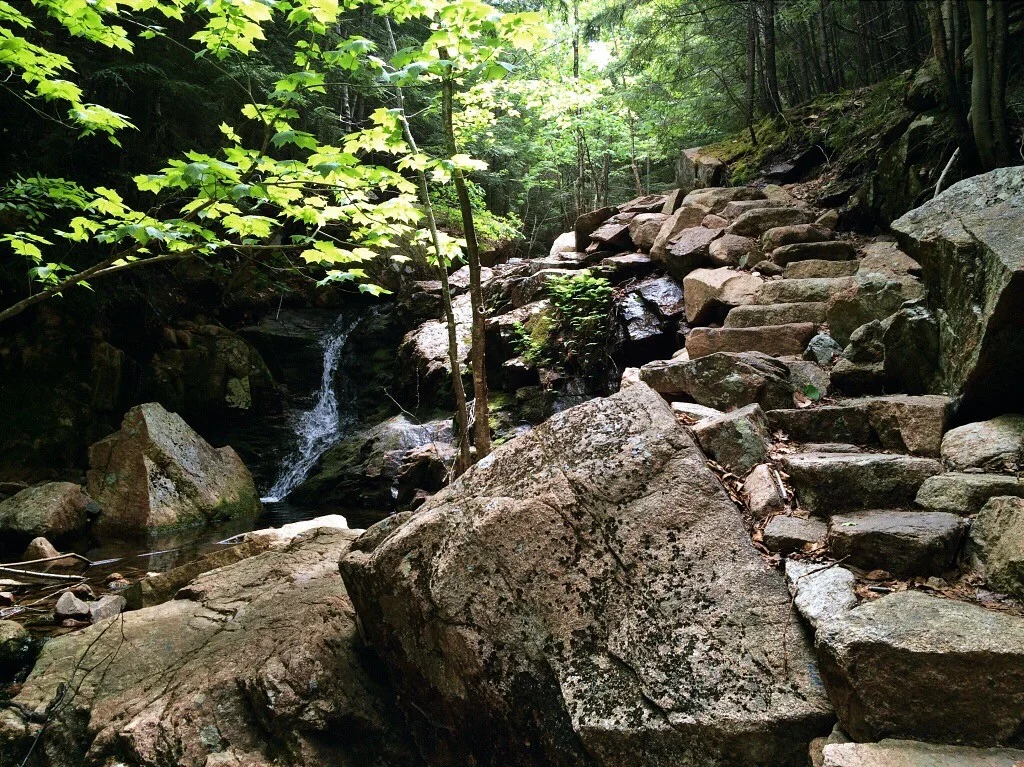Acadia (ME)
Park Number: 52/63
First Visited: June 10, 2016
The waitress tells me it’s the most visited national park in the country. And, instantly, I know I’m an asshole. I read it on her face. I feel it on my own. I’m scoffing. Arrogant. Because I know too much about this shit. Acadia is the ninth most visited park in the system at two and half million visitors a year—seven and a half million less than the actual most visited (the Smokies).
She tells me, despite being seasonal help year after year, that she made her first voyage into the park last week. We are maybe, at most, five miles from the entrance. She is surprised I’ve come all this way just for the park. I look down at my REI “National Park Centennial” shirt—I haven’t changed my clothes in days. I do not tell her I’ve suffered through much worse for the parks.
Other encounters with locals mirror the same sentiment: There’s an iconic lighthouse out here? I didn’t know that. And, I really just come here to drink in Bar Harbor. This type of naïveté isn’t unique to Mount Desert Island. I find misconstrued ideas about the parks everywhere (when in American Samoa the locals kept telling me they had never been to the park because it was too expensive . . . and the park is free).
Therefore, when entering Acadia, I feel better equipped than most, despite having done little research for the trip. In fact, this is the least prepared I’ve ever been (I’m hiking in flip flops and every person I pass comments). But here’s the truth: I’m losing interest in the goal I set almost exactly six years ago: to visit every U.S. national park. I’m almost there—eight left. But monumentalism is beginning to feel trite, and cheap, and hack. Steinbeck said it first: Yellowstone National Park is no more representative of America than is Disneyland. And I’m starting to believe it with the way people are getting gored by bison, or run over by cars while trying to photograph bald eagles, or turning to human soup after falling into geysers.
What’s been exciting me lately is the nuance: the whorl of sepals, petals, leaves, stipules, branches; the taste of fir buds on my tongue; cinquefoil, buttercup, milkweed, the columbine in my mother’s garden. Nature will always demand our attention, but not through an Instagram filter. We need dirt under our nails.
I’m depressed. And it’s not a favorable lens to see Acadia through. I’m alone. I’m thinking of the symbolism in a dead fox near the park entrance, the result of Ed Abbey’s “industrial tourism.” I’m hiking through a gorge to get to Cadillac Mountain, the highest point on the coastal Eastern seaboard: 1,528 feet. It doesn’t take long. Or much energy. But I’m on the move and processing a previous week at a writing conference. Things need to change in my life and for the first time in a long time I’m thinking about abandoning Montana for an urban city center. I need a different kind of wild. I need a break from living stress free.
Wind chills me at the summit and I know this is the beginning of something new, probably a goodbye. I think back to my Buddhist studies, of how we are ushered across life in vessels, like boats on a pond, and how, when reaching a new shore, we must abandon that boat. We can’t take it with us. And it was the Buddha saying this of Buddhism—what a beautiful command for a religious icon to give: Relinquish my teachings once they’ve served their purpose. Don’t cling. Don’t be complacent.
I bow to you, untamed places of my salvation. You saved my life. And I offer you an Aloha, as I was taught in Hawaii: It was an honor to share breath with you. But it’s become too easy, or redundant, defending the wild in wild places. I need to re-learn to love you, but this time from afar.
Acadia is ancestral lands to the Maliseet, Micmac, Passamaquoddy, and Penobscot Tribes, collectively known as the Wabanaki, or “People of the Dawnland.”
Related Articles:







